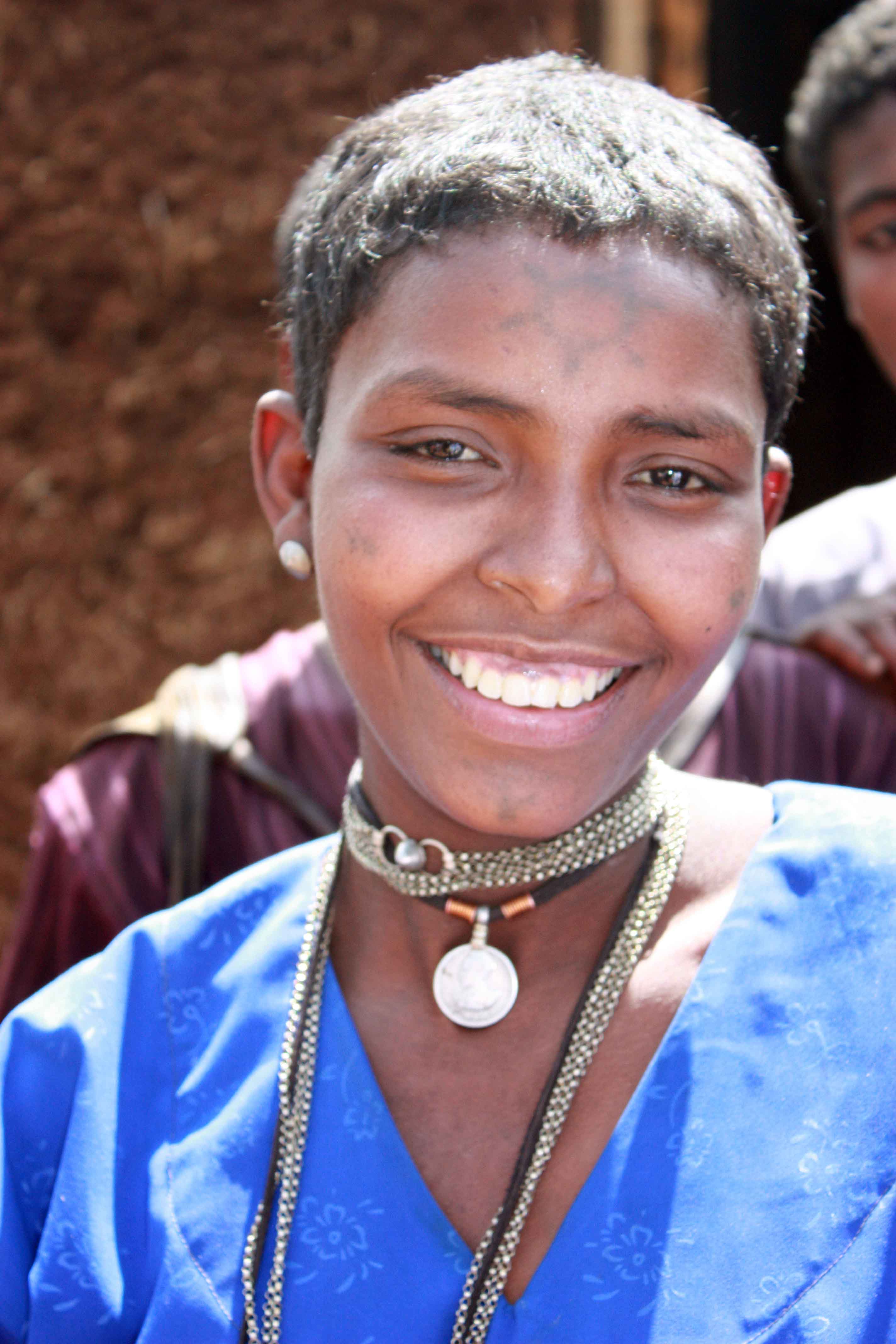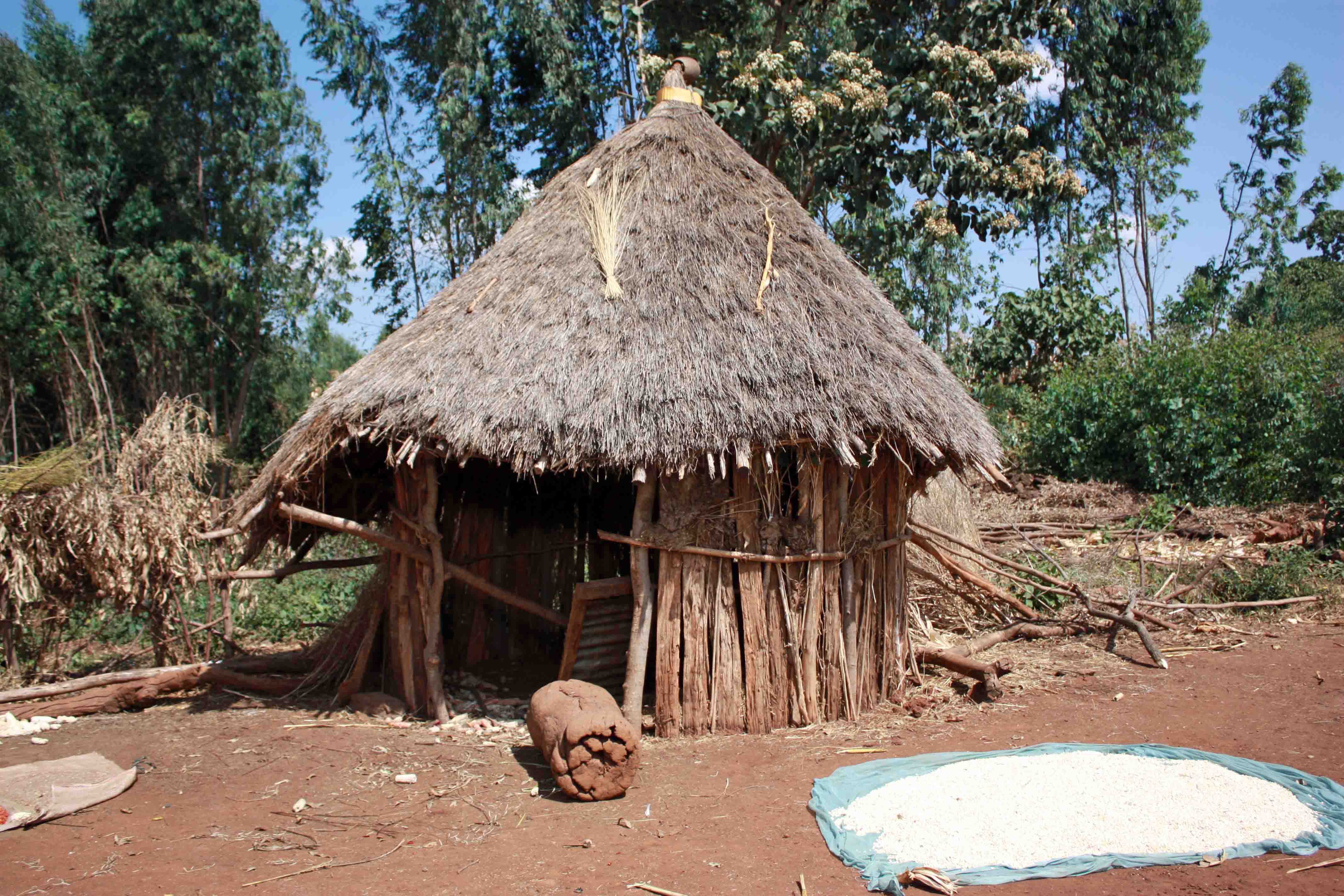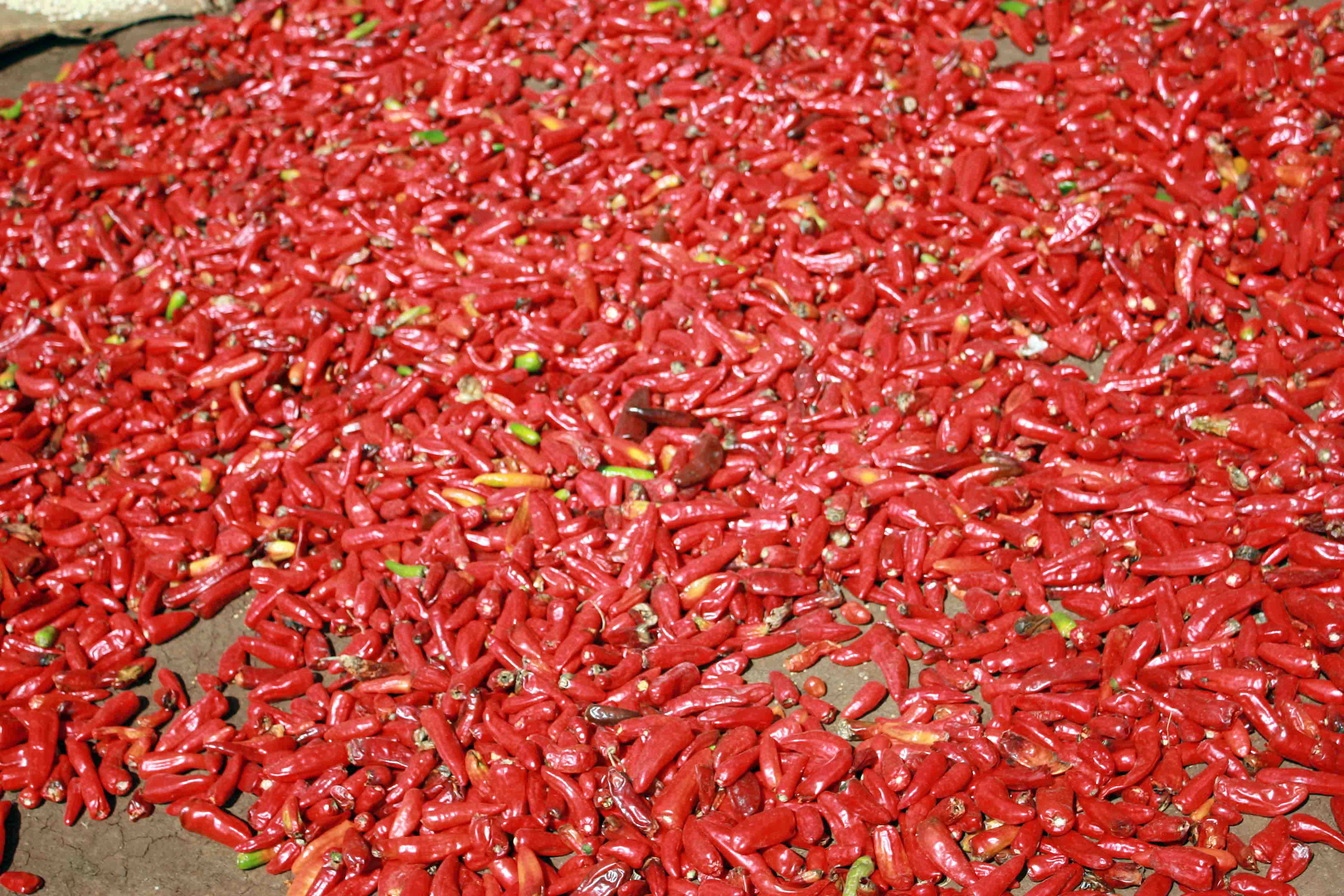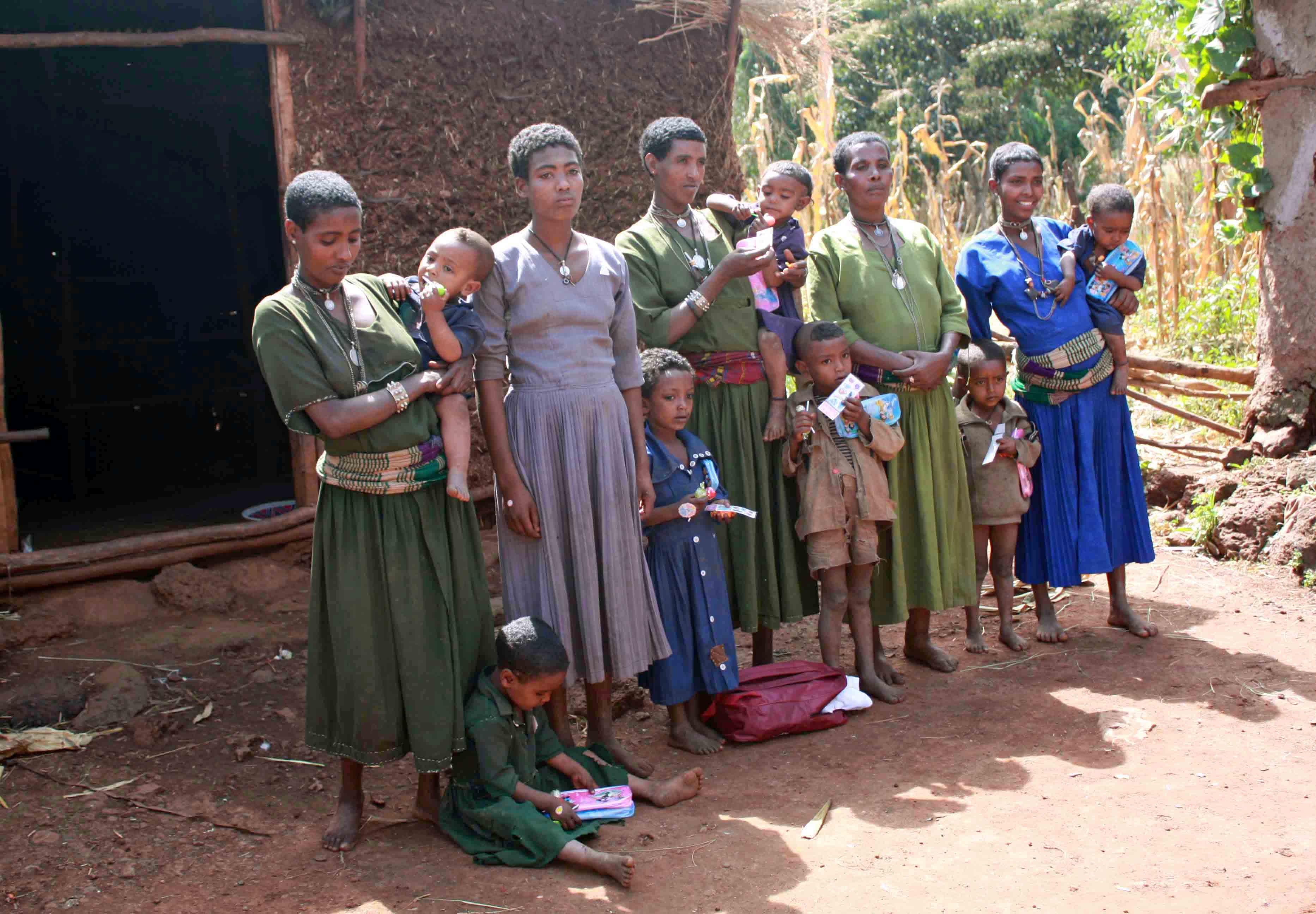I keep returning to the girl in the photo. There have been many in history with a couple notable: an Afghan girl who was featured on the cover of National Geographic Magazine in 1984 (http://photography.nationalgeographic.com/photography/photographers/afghan-girl-cover.html ) and Kim Phuc, the Vietamese girl running through the streets naked as the victim of a napalm attack (http://www.globalsecurity.org/military/systems/munitions/napalm.htm ) These photos once you see, you will never forget: one beautiful and one tragic. The particular girl I am talking about is one Kimberley (the organizer of our Ethiopian Journey) met on the outskirts of Bahir Dar, a city 45 minutes west of Addis Ababa by plane. In another lifetime, the girl could have been a Hollywood film star with her radiant smile and full lips resembling Halle Berry. Kimberley met Simgen when visiting Bahir Dar during one of her many charity trips to Ethiopia. She requested the driver to take her where the tourists “don’t go”. She knew the women of the Amhara region of Ethiopia were stunning and wanted to capture their beauty.
Kimberley’s meeting Simgen was random and resulted in many beautiful photos, one of which remained with Kimberley. The following year she returned to find her “girl in the photo”. She found her by going to the approximate spot they met and then showed her photo around until someone recognized her. Since this second meeting, Kimberley has been “sponsoring” Simgen and her family.
On the second day of our “Ethiopian Journey” we flew to Bahir Dar from Addis Ababa. Hiring a driver we set out to go left of the hill and away from Bahir Dar (toward Addis Ababa) 20 minutes into the country. We first stopped to buy a grain called tef for Simgen and her family. Tef is used to make injera, a pancake like bread, which is a staple in the Ethiopian diet. The market place was bustling. It seemed as if everyone from the village was there. Some of the youth were playing foosball outside of the shops. It seemed out of place to see foosball tables outside. But this is something we saw throughout our journey in Ethiopia. We all took photos. The locals were happy to be able to see themselves in our viewfinders. We were almost mobbed by the youth wanting our candies and stickers. As 10 non-Ethiopian women, we attracted a lot of attention . Eventually, we made it through the crowd back into our hired van.
Again, we drove to the area where Kimberley first met Simgen. Then, she started showing her photo around. The first person we showed did not know Simgen. The next man did. He agreed to show us her home. As we approached the area she lived, I spotted her walking on the opposite side of the road with a baby on her back. I had seen her photo so often that it was unmistakably Simgen. The radiant smile on her face broke into an even wider smile when she realized that Kimberley was there to visit her again. The happy reunion reduced many of us to tears.
Soon we were all invited back to meet the family. The men were all out working in the fields so it was only us women. Despite not knowing their language, we managed. There is a common language that women speak, a quiet understanding. One that is even stronger amongst mothers. We also had Kimberley’s “foster daughter” Meaza (“Muzza”) there to interpret for us. Simgem’s petite frame did not easily give away that she was 7 months pregnant with her 3rd child.  The child she was carrying on her back was not the baby boy she was originally photographed with but her 2nd child, a daughter. The women carry the infants on their backs in a wrap until the child is walking. Once they are toddlers they no longer use a wrap but both arms intermittently for support. The infant is usually kept undressed from the waist down until they are potty trained. I observed a toddler wait until he was taken off his mother’s back to pee on the ground. Amazing. We have it so wrong in the western world. Additionally, the women breastfeed on demand which is easy when the baby is always near you and you are not wearing a bra. It just seemed so very natural. For more photos of our experience and the lovely ladies in Bahir Dar you may have a look here: http://www.facebook.com/album.php?aid=35455&id=114388688615807
The child she was carrying on her back was not the baby boy she was originally photographed with but her 2nd child, a daughter. The women carry the infants on their backs in a wrap until the child is walking. Once they are toddlers they no longer use a wrap but both arms intermittently for support. The infant is usually kept undressed from the waist down until they are potty trained. I observed a toddler wait until he was taken off his mother’s back to pee on the ground. Amazing. We have it so wrong in the western world. Additionally, the women breastfeed on demand which is easy when the baby is always near you and you are not wearing a bra. It just seemed so very natural. For more photos of our experience and the lovely ladies in Bahir Dar you may have a look here: http://www.facebook.com/album.php?aid=35455&id=114388688615807
When we first saw Simgen, she was wearing a green dress that all the other women seemed to be wearing. The dress was a donated school uniform. But when we saw her again at her home, she was in a brilliant blue dress. It is custom when you are honored with a guest to change into your finest clothes and to wash your arms (as they may be dirty from working outside). The area in which they live was compromised of three little structures. One building housed the majority of Simgen’s mother-in-law and family, along with the rooster and some chickens. The 2nd building was a traditional tulok, a circular hut. And the last was the home that Simgen and her husband were able to build for themselves with Kimberley’s support. This support allows Simgen a better quality of life. With the farming, they are mostly self sufficient but in times of drought or during a bad crop, things can get tough. In the center of the three structures was a clearing where they were drying grain and peppers. The peppers smelled divine.
The women were most welcoming. Zainab, our journalist for the trip, was able to interview the women via Meaza. It was fascinating to learn about their lives. Before meeting Kimberley, Simgen had never met or spoken to a westerner. Simgen and her family had never heard about fistula’s either. They did not go to doctors as well. We handed out sweets and pencils to the children and big white scarves to the women. White scarves they wear when attending church. Kimberley presented Simgen with some of the photos she had taken on a previous trip. This was quite a delight for them all as they do not have photographs of themselves. One woman kept jestering for me to take a photo of her and her baby. I took repeated photos until I realized that she too wanted an actual photograph. If only I had brought a Polaroid camera. It was difficult leaving the serenity to go into the town of Bahir Dar after our visit. Their life seemed simple, perhaps near perfect.






























Great post Rajka, the baby waiting to pee is a good example of the Elimination Communication techniques we use with our little one. She sits on the potty when she needs to go and we use almost no diapers (only on car trips) although she is only 7 months old. Of course this won’t make us very popular with Pampers!
John, You are much better than I on the early potty training! Good for you! My parents (from Eastern Europe) and all of their relatives were potty trained by the age of 1. What happens to us in western society?
Beautiful piece, Rajka! The description of Kimberley and Simgen’s reunion moving you all to tears, moved me to tears too!! What an amazing insight into the lives of these women; I love the idea that women have their own quiet language, you are right. Can’t wait to read more…stunning photos too. Congratulations on the trip also x
Thanks Nikki! It was one of those life changing trips.
Rajka, I am extremely moved by your story and experiences from Ethiopia. Tears collected in my eyes and my heart swelled with pride to be your friend. Your photography is stunning.
I would love to make a trip like this some day.
Thanks Brenda! Beautiful words from a beautiful lady!
Pingback: The Sea of Faces: Ethiopia’s Orhpans and Vulnerable Children
we dont know each other. i stumbled across this site by accident…well i suppose it was meant to be. i want to thank you for going to my country and taking such good care of my people. i cried as i studied your site and read your words about your experiences. your photos are truly beautiful. and your spirit is likewise as beautiful. if only more people in the world had your heart and desire to help others. may God bless you.
Thank you for your kind words. They mean so much! We are spreading the word here about Ethiopia, its people and its plight by giving a series of talks this month in Qatar to the expatriates! Thanks again and keep reading! Rajka